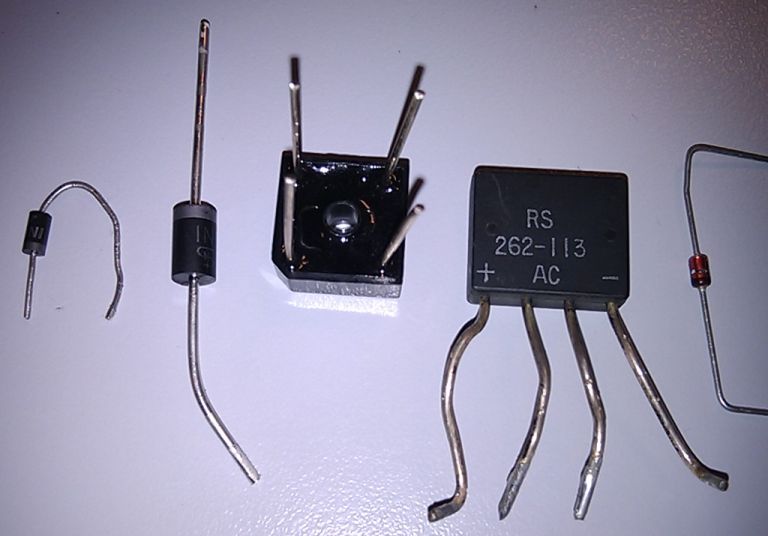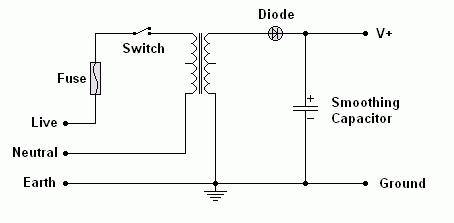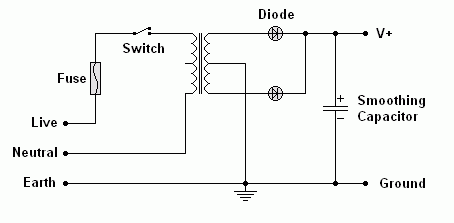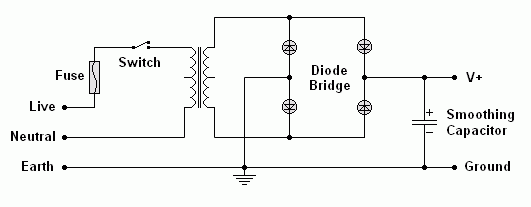

Power Supplies |
|
To gain access to revision questions, please sign up and log in.
Power Supplies convert mains Alternating Current (AC) into low voltage Direct Current (DC) suitable for electronic circuits.
aDiodes used for converting AC into DC are called rectifiers. In the image below ...

Most electronic circuits need low voltage direct current (DC).
To minimise energy loss in power lines, the power companies use high voltage alternating current (AC) for power distribution. This is because it's possible to step the voltage up or down using transformers. High voltage transmission is more efficient. Power supply circuits step the mains voltage down to a suitable value and produce direct current.
Here are some examples. The transformer steps the voltage down to a suitable low value. The diode/s only pass current in one direction so the AC is converted to DC. The capacitor stores charge and smooths out the raw DC. To get really good smoothing, electronic regulation is needed in addition to the capacitor used to store charge.
b
This is the simplest and least satisfactory. It is called a half wave rectifier because the diode only conducts for half the time. 0.7 Volts is lost across the diode.
c
This is a full wave rectifier using a transformer with a centre connection to the secondary coil. 0.7 Volts is lost across each diode.
d
This is a bridge rectifier. This is the best solution. It has a simple transformer and full wave rectification. 1.4 Volts is lost across the diodes.
eThese sketches show ...
Here is a voltage regulator circuit using the 7805 chip. This produces very smooth DC at exactly 5 Volts. Other voltages are possible too.

reviseOmatic V3 Contacts, ©, Cookies, Data Protection and Disclaimers Hosted at linode.com, London